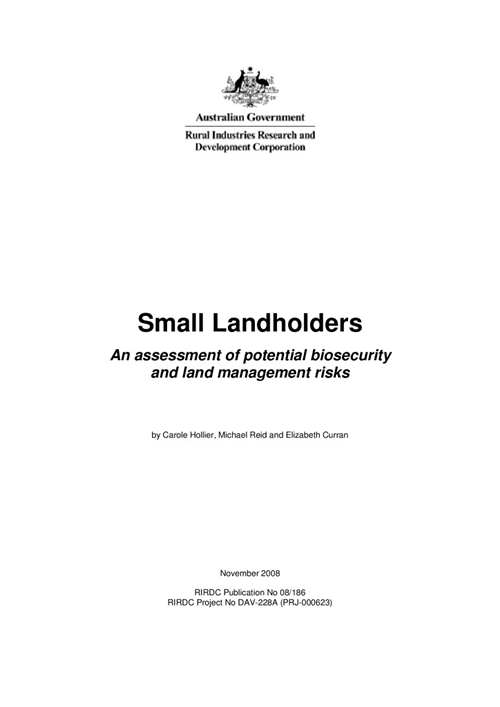This report explores some factors that may influence biosecurity risk to Australian commercial agriculture associated with small lifestyle landholders; their location, characteristics, land use and management practices. The report addresses some of the gaps in knowledge about small lifestyle landholders and biosecurity. An assessment of the potential risks posed by these kinds of landholders has been made. Small lifestyle landholders are an important segment of the rural population in many parts of Australia. The traditional boundaries and distinctions between rural and urban Australia have become increasingly blurred.
This reported is targeted at future policy makers and extension professionals. Agricultural landscapes are diverging, with more regions characterised by less dependence upon agricultural production. Currently, demand for landscape amenity is a major influence upon the pattern of structural change in Australian agriculture. The influence is apparent in the high price of land beyond its agricultural value in the more amenable and accessible parts of the rural landscape and peri-urban fringes. A new social characteristic of rural dwellers is typified as amenity and small lifestyle landholders. Increasingly the boundary between rural and urban amenity is becoming blurred in more multiple-function landscapes. Small lifestyle landholders share pockets of land and a wide range of agricultural pursuits within a traditional farming mix.





